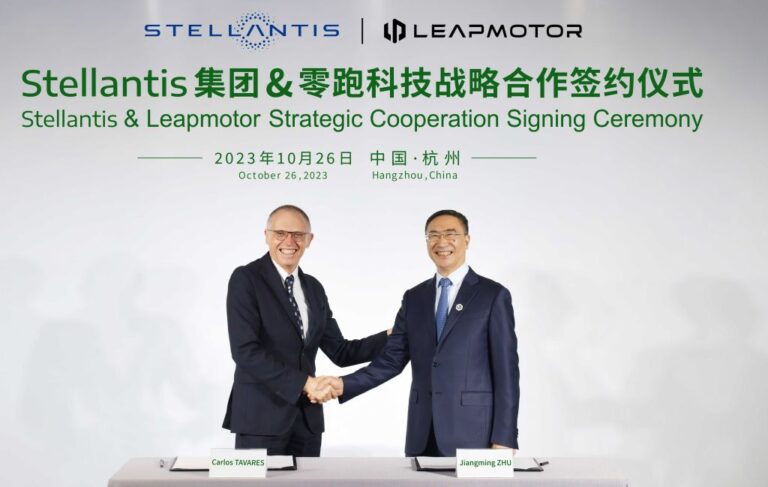According to one of the sources, China’s National Development and Reform Commission (NDRC) has approved the joint venture, but the agreement still requires regulatory permission in other markets.
Stellantis revealed last October that it was buying a 21% interest in Leapmotor for $1.6 billion, giving it a new shot at China, the world’s largest vehicle market by sales.
Under the terms of the agreement, Stellantis would have exclusive rights to build, export, and market Leapmotor goods outside of China, a first for a traditional Western automaker. Stellantis would hold 51% of the joint venture.
Leapmotor stated in a statement to Reuters on Thursday that the joint venture’s executive staff is in place, and that the C10, the first Leapmotor EV model planned for international markets, will shortly begin sales in Germany, France, Italy, and Spain.
Previously, Leapmotor stated that first shipments to Europe would occur in the second half of 2024.
Leapmotor did not respond to a request for comment regarding the NDRC approval. Stellantis declined to comment, and representatives from the NDRC could not be reached.
Stellantis CEO Carlos Tavares stated last month that the automaker might produce EVs using Leapmotor technology in Europe, North America, and other markets where competitively priced vehicles are required to compete with Chinese EV makers.
The proposed joint venture comes amid escalating trade tensions between China and the European Union, which is probing whether Chinese EV manufacturers receive unfair government subsidies.
The European Commission announced on Wednesday that it will begin customs registration of Chinese EV imports, which might result in retroactive tariffs if the EU’s trade inquiry finds improper subsidies.
